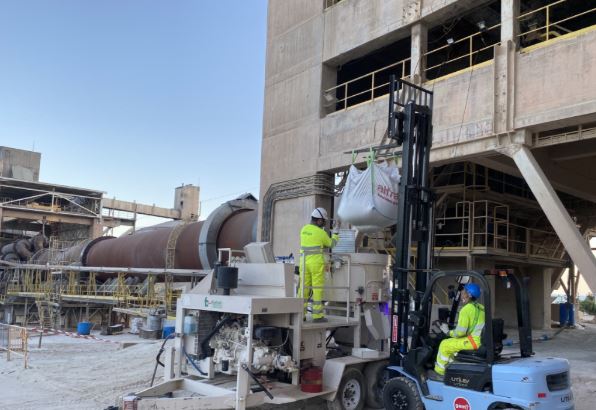
In the refractory industry, the efficient and safe installation of refractory materials is crucial to ensure optimal performance of industrial equipment exposed to high temperatures. One of the most advanced and effective techniques in this field is pumping. This method, also known as pumping, has revolutionized the way refractory materials are applied, offering significant advantages over traditional methods such as gunning or pouring.
Pumping involves the use of high-pressure pumps to transport and apply refractory concretes in a wet form directly onto the surfaces to be lined. This process allows for a more controlled and uniform application, reducing material losses and improving the adhesion of the refractory to the surface of the industrial equipment. As a less invasive technique, it minimizes the risks associated with installation and reduces equipment downtime.
At Alfran, we have developed innovative solutions such as our Alfranpum concrete range, specifically designed for demanding industrial environments, combining advanced technology with high-quality materials to ensure efficient and long-lasting installation of refractory linings. Below, we will delve into the key aspects of pumping and its application in the refractory industry.
What is Refractory Concrete Installation by Pumping?
The installation of refractory materials by pumping refers to the process of applying refractory concretes via high-pressure pumping. This technique allows for a homogeneous distribution of the material over the surfaces to be lined, ensuring full and uniform coverage. Unlike traditional methods, pumping provides greater control over the amount and speed of application, resulting in higher precision and efficiency during the installation process.
One of the main advantages of pumping is its ability to access difficult-to-reach areas or complex geometries. This not only facilitates installation in confined or hard-to-reach spaces but also reduces operational costs. The use of high-pressure pumps enables faster and more efficient application, contributing to reduced industrial equipment downtime.
Benefits of Wet Pumping for Refractory Concrete Installation in Industrial Equipment
Wet pumping offers several key benefits that enhance both the efficiency of the process and the quality of the refractory lining. Some of the main benefits include:
-
Reduction in the number of people involved, with no need for manual handling, contributing to optimal safety conditions.
-
Lower dust generation: Unlike gunning, pumping produces less dust during application, which helps maintain a cleaner and safer work environment.
-
Excellent mechanical performance similar to vibrocasting. High resistance to abrasion, erosion, and chemical attack.
-
Greater compaction. Low porosity. High mechanical strength.
How Pumping Improves Efficiency in Refractory Concrete Installation
Pumping improves efficiency in refractory concrete installation by optimizing several aspects of the process. First, the number of people involved in the process is reduced, minimizing the risk of accidents.
Another key aspect is the reduction of dust generation during application, contributing to a safer and healthier work environment for operators. Lower dust exposure also reduces the risk of respiratory issues and improves visibility in the work area.
Additionally, the controlled and precise application of the material reduces material losses and ensures uniform coverage, improving the quality of the lining and reducing the need for subsequent repairs.
What Refractory Concretes Are Ideal for the Pumping System?
To ensure a successful application, it is essential to select refractory concretes that are compatible with this method. The ideal materials should have certain characteristics, such as:
-
Good flowability and workability: Refractory concretes must be fluid enough to be pumped effectively through hoses without clogging, but they must also maintain their stability once applied.
-
High thermal and mechanical resistance: Refractories applied via pumping must be able to withstand the high temperatures and demanding conditions of industrial equipment without prematurely losing their physicochemical properties.
-
Compatibility with pumping systems: It is essential that the selected materials are suitable for pumping without causing damage to pumps or hoses and that they maintain their integrity during the application process.
At Alfran, we offer advanced solutions that combine high-quality refractory concretes with state-of-the-art pumping technology, ensuring efficient and long-lasting installation of refractory linings on industrial equipment exposed to high temperatures.
This article provides a detailed overview of the pumping process in refractory concrete installation, highlighting its benefits, differences from other methods, and key considerations for successful implementation. For more information or personalized advice on the application of refractories via pumping, you can visit https://alfran.com/productos/alfranpump/.


